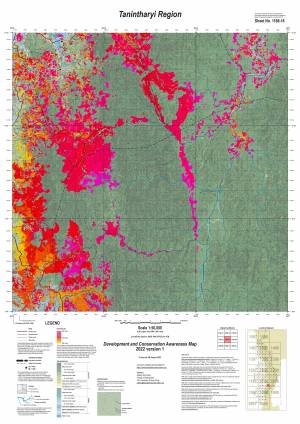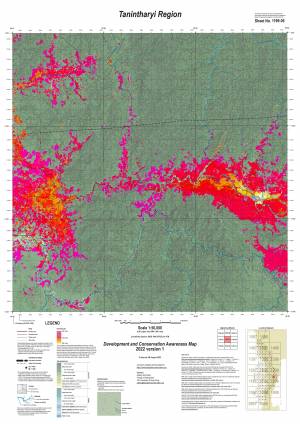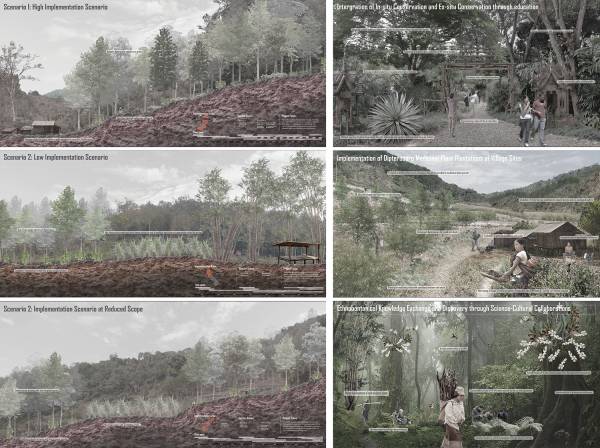For Myanmar civil society engaged in conservation and sustainable development, it is often difficult to make connections between government-published information and current remote-sensing data on landscape change, if such data can easily be accessed at all. This post contains a new series of 125 maps for Tanintharyi Region at 1:50,000 scale matching the extent of the commonly used map series published in 2007 by the Myanmar Survey Department, Ministry of Agriculture & Irrigation (First edition 2007). This new series is freely downloadable.
Primary layers are from public sources, including forest loss year (2000-2021), land cover, villages, roads and streams. Additional features include protected areas (gazetted and planned), industrial zones, and linear infrastructure. Layers in these new maps were chosen and styled to emphasize landscape change over the past 20 years. For that reason, if forest loss occurred at any time since the year 2000, that loss is shown instead of current land or tree cover, regardless of any tree cover gain since the initial loss.
Format: All sheets are A1-size (594x841mm) at 150 DPI resolution, RGB color. Each sheet has a location diagram in the lower-right corner with the sheet numbers for all maps in the series. Each file is named with the MoA sheet number. For instance, for sheet 1198_16 the filename is: Dcam22v1_Sheet_1198-16.tif
Download map sheets:
- One zip file (1,327 MB) containing all high-quality (TIF format) sheets for printing: Dcam22v1_Sheets_HighQuality_Tif_150dpi_Rgb.zip
- One zip file (243 MB) containing all low-quality (JPG format) sheets if you need smaller file sizes: Dcam22v1_Sheets_LowQuality_Jpg_150dpi_Rgb.zip
Individual map tiles (low-quality JPG) can be downloaded by clicking a tile on this key map:
Posted by: Ashley Scott Kelly (Design for Conservation)




















